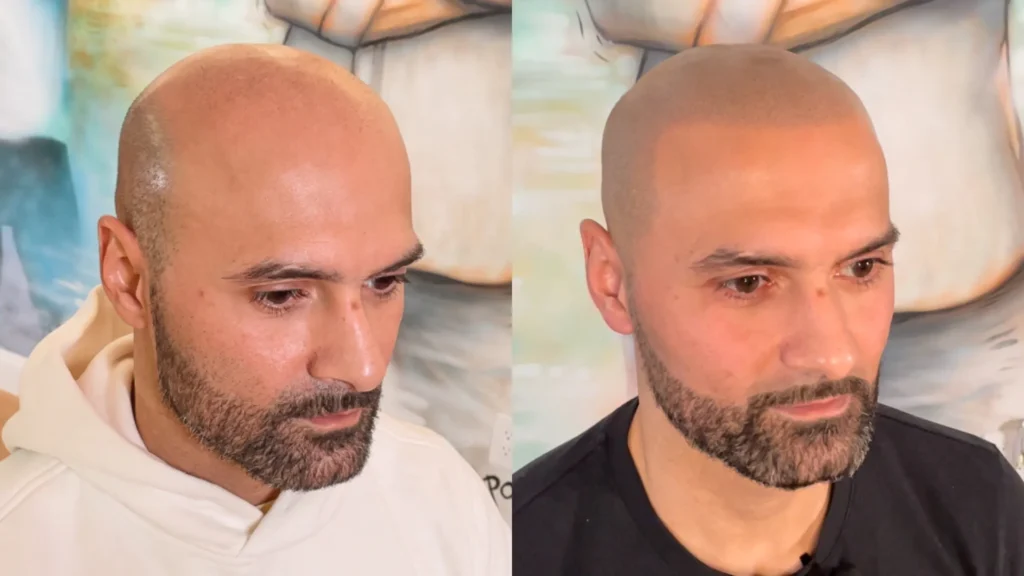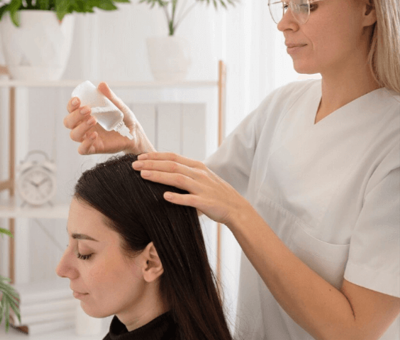Medical hair loss caused by conditions such as alopecia areata, chemotherapy, scarring, or trauma presents unique challenges when choosing an effective treatment. Two of the most popular solutions are Scalp Micropigmentation (SMP) and Hair Transplantation. Both have their advantages, but which one is better for your specific condition? Korean clinics, recognized for their advanced expertise and cutting-edge technology in both SMP and hair transplants, offer valuable insights to help you decide.
Understanding Medical Hair Loss and Treatment Needs
Medical hair loss differs from typical pattern baldness. It can be patchy, diffuse, or involve permanent damage to hair follicles due to:
- Autoimmune diseases (e.g., alopecia areata)
- Cancer treatments like chemotherapy or radiation
- Scarring alopecia from injury or surgery
- Other medical conditions affecting hair growth
Such conditions often require personalized approaches to restore natural hair appearance effectively.
What Is Scalp Micropigmentation (SMP)?
SMP is a non-surgical cosmetic procedure that deposits pigment into the scalp skin to replicate the appearance of hair follicles. It creates the illusion of fuller hair or a shaved head look without hair regrowth.
Key Benefits of SMP for Medical Hair Loss
- Non-invasive with minimal downtime
- Suitable for patients with insufficient donor hair or scarred scalp
- Immediate visual improvement for patchy or diffuse hair loss
- Can camouflage scars, burns, and alopecia patches
- Customizable pigment density and hairline design
- Lower overall cost compared to hair transplants
What Is a Hair Transplant?
Hair transplantation involves surgically moving hair follicles from healthy donor areas (usually the back or sides of the scalp) to balding or thinning areas. Common techniques include Follicular Unit Extraction (FUE) and Follicular Unit Transplantation (FUT).
Key Benefits of Hair Transplant for Medical Hair Loss
- Provides actual hair regrowth, allowing natural hair styling
- Permanent solution for suitable candidates
- Advances in Korean clinics have improved graft survival and naturalness
- Can restore hair in cases with sufficient donor hair
SMP vs. Hair Transplant: Korean Clinics’ Perspectives
1. Suitability Based on Hair Loss Type
- SMP: Ideal for patients with diffuse thinning, scarring alopecia, or inadequate donor hair (common in medical hair loss). Also suitable for patients who want a non-surgical, low-risk option.
- Hair Transplant: Best for patients with stable hair loss and sufficient donor hair, particularly in male pattern baldness. In medical cases, transplant success varies depending on scalp health and hair follicle viability.
2. Treatment Duration and Recovery
- SMP: Usually completed in 3–4 sessions over a few weeks with minimal discomfort and no downtime.
- Hair Transplant: Surgical procedure with several hours per session, and recovery may take weeks, including redness, swelling, and scabbing.
3. Risks and Complications
- SMP: Low risk; minor redness or irritation possible. Hypoallergenic pigments minimize allergic reactions.
- Hair Transplant: Surgical risks include infection, scarring, and shock loss. Scarring can be problematic for patients with compromised scalp skin from medical conditions.
4. Visual Outcome and Maintenance
- SMP: Provides a realistic shaved scalp appearance or density illusion but does not produce real hair. Requires touch-ups every few years.
- Hair Transplant: Produces real hair growth, enabling various hairstyles but may need future sessions as hair loss progresses.
5. Cost Considerations
- SMP: Generally more affordable, especially for large bald areas or patients needing scar camouflage.
- Hair Transplant: Higher upfront cost, influenced by the number of grafts and clinic expertise.
Combining SMP and Hair Transplant: The Korean Clinics’ Innovative Approach
Many Korean clinics offer combined treatment plans where SMP enhances the density and appearance after hair transplantation, especially in medical hair loss cases with thin or patchy regrowth. This hybrid approach can:
- Camouflage thinning areas between transplanted hair
- Minimize visible scarring from surgery
- Provide a fuller, natural look without additional grafts
Patient Considerations: How to Choose the Right Option
- Medical History: Consult your dermatologist and oncologist about your scalp health and treatment safety.
- Donor Hair Availability: Insufficient donor hair favors SMP or combined treatments.
- Desired Outcome: If you prefer actual hair growth and styling options, hair transplant might be better; if you want immediate visual density without surgery, SMP suits you.
- Budget and Downtime: SMP is budget-friendly with no downtime; hair transplants require more time and financial investment.
- Long-Term Hair Loss Progression: Progressive conditions may benefit more from SMP or combined approaches to manage future hair loss.
Why Choose Korean Clinics for Your Medical Hair Loss Treatment?
- World-Class Expertise: Korean clinics lead in hair restoration and SMP with extensive experience treating medical hair loss.
- Advanced Technologies: Use of AI scalp mapping, robotic-assisted hair transplant techniques, and organic hypoallergenic pigments.
- Integrated Medical Support: Collaboration with dermatologists, oncologists, and plastic surgeons ensures safe, comprehensive care.
- Multilingual Services: Support for international patients throughout consultation, treatment, and follow-up.
- Affordable Packages: Competitive pricing combined with high-quality standards make Korea a top global destination.
Final Thoughts
Both scalp micropigmentation and hair transplants have important roles in addressing medical hair loss. Korean clinics provide expert assessment to help determine the most effective and safe treatment or combination for your unique needs.
Consult a reputable Korean clinic to receive a personalized evaluation and learn how these innovative solutions can restore your hair and confidence.




